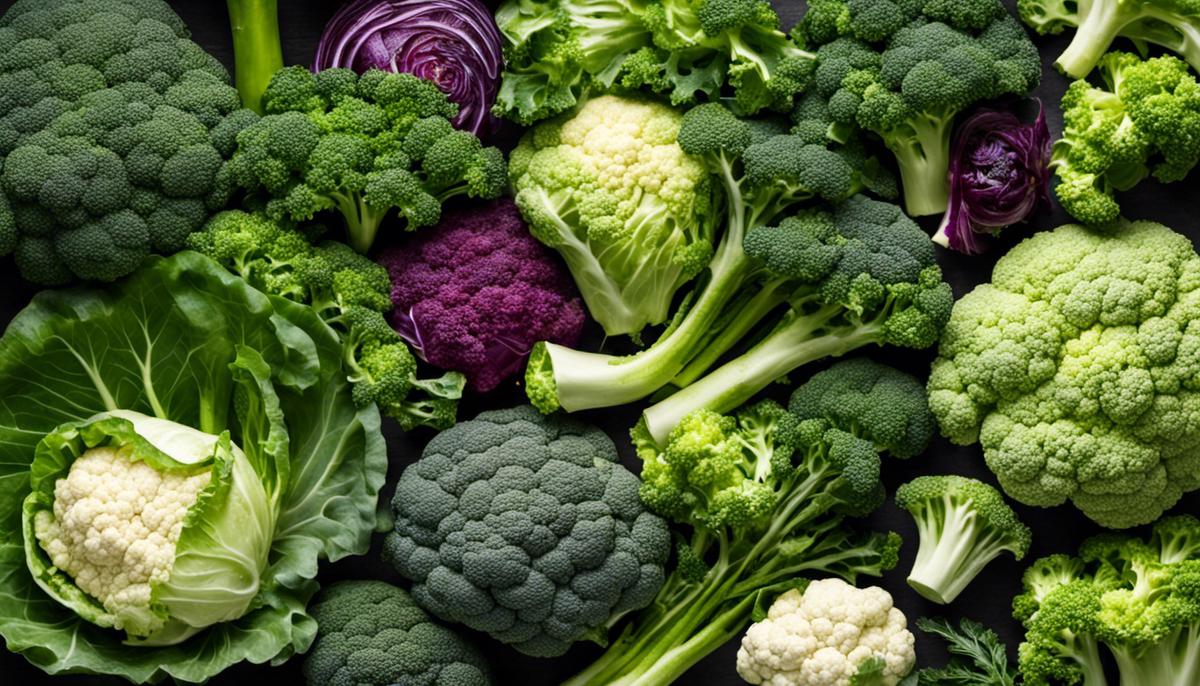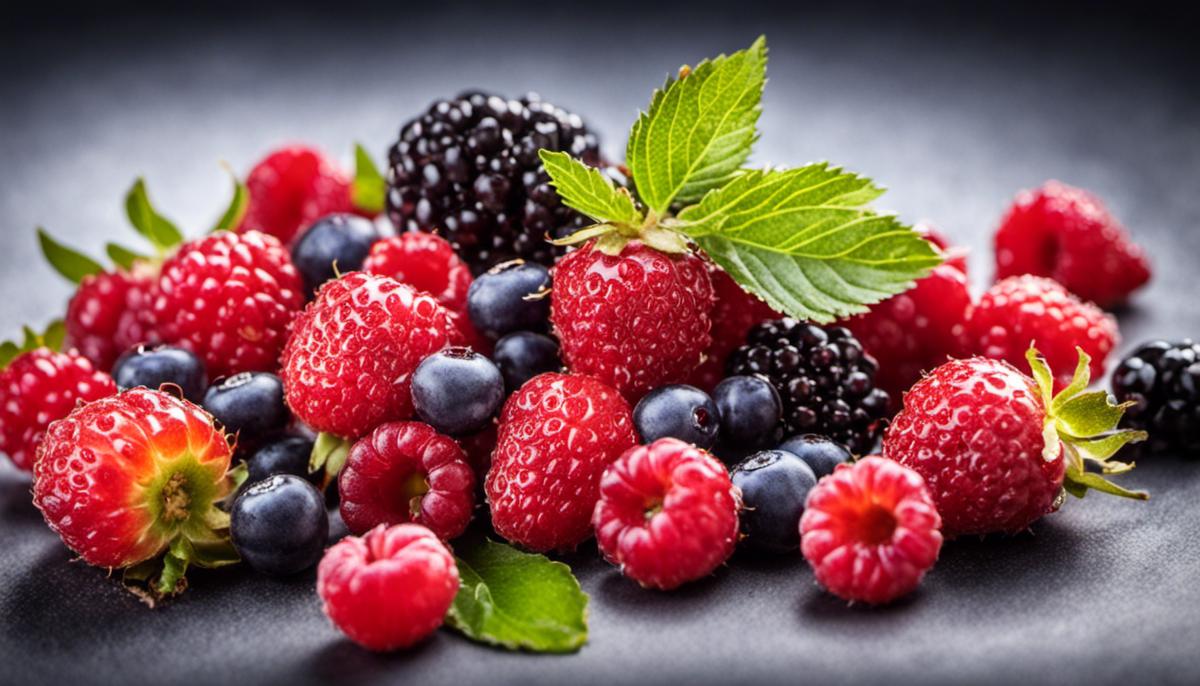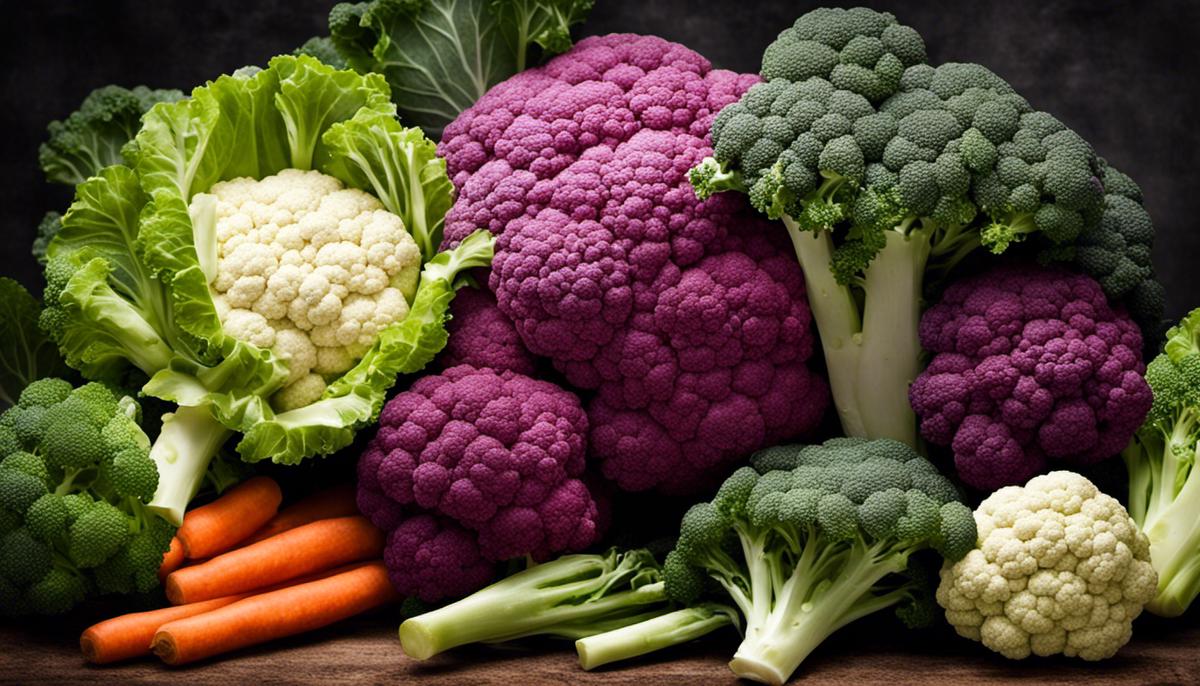With changing lifestyle patterns and dietary habits, the incidence of cancer has seen an uptick in recent years. While treatment options continue to evolve and improve, a focus on prevention proves to be an impactful strategy. Indeed, a significant factor in this preventive approach can be directly linked to eating healthier and incorporating specific foods into our daily diets. Spotlighting the role of diet in cancer prevention, certain foods possess remarkable cancer-fighting properties due to the presence of beneficial bioactive compounds. This discussion emphasizes a couple of these superfoods—cruciferous vegetables and berries—and explores their anticancer properties.
Table of Contents
Cruciferous Vegetables and Their Role in Cancer Prevention
Cruciferous vegetables, featuring members like broccoli, cabbage, cauliflower, and kale, often frequent the top ranks of healthy diet recommendations. Interestingly, one can find a substantial number of studies linking these seemingly unassuming, cruciferous greens to a decreased risk of cancer. Multiple mechanisms underpin this relationship, illuminating a fascinating interplay between dietary choices and disease prevention.
A primary attribute is the high levels of glucosinolates found in these quintessential vegetables. This group of sulfur-containing compounds, when chewed or chopped, leads to the formation of biologically active metabolites such as indoles and isothiocyanates. These potent molecules have been looked upon favorably in epidemiologic as well as experimental studies for their anti-carcinogenic properties. They are suspected to target various stages of carcinogenesis, providing preventative benefits by inhibiting the evolution of normal cells into malignant ones.
To elucidate further, isothiocyanates have been recognized for their ability to neutralize carcinogens. These compounds can ramp up the activity of detoxifying enzymes, assisting the body’s natural defenses in eliminating potential carcinogens before they cause cellular damage. Some varieties of isothiocyanates also hinder enzymes that convert certain compounds into carcinogens, essentially dampening the creation of harmful agents at their very source.
Concurrently, the compound indole-3-carbinol (I3C) has been studied for its role in normalizing hormone levels, reducing the risk of hormone-associated cancers, particularly breast cancer. I3C can modulate estrogen metabolism, promoting a healthier hormonal balance that lessens the likelihood of unchecked cell division – a fundamental element of cancer development.
On a related note, the dietary fiber in cruciferous vegetables should not be overlooked. As they traverse the digestive tract, these fibers help to ‘sweep away’ potential carcinogens, reducing overall exposure and lessening the likelihood of developing colorectal cancers.
With vitamin C and selenium in ample supply, these vegetables pack an additional antioxidant punch. By neutralizing the damaging free radicals, antioxidants provide a protective shield to body cells and DNA, significantly dampening the likelihood of cancer development.
In sum, the cancer-protective properties of cruciferous vegetables arise from an intricate network of synergistic mechanisms – from direct carcinogen neutralization to hormonal balancing and antioxidant defense. As these properties come under continued scientific exploration, it is fair to say that the humble cruciferous vegetables can play an extraordinary role in the dietary battle against cancer.

Berries and Their Anticancer Properties
Moving our attention from the verdant world of cruciferous vegetables to the vibrant realm of berries, it becomes essential to discern the cornucopia of chemicals which embody their potential anticarcinogenic properties. An array of chemicals, including but not limited to polyphenols, flavonoids, and carotenoids, characterize these natural powerhouses of health.
Polyphenolics, the proverbial poster child for health-promoting substances, are ubiquitous in berries. These compounds, in particular anthocyanins, resveratrol, ellagic acid, and pterostilbene, have drawn the attention of researchers due to their antioxidant and antiproliferative characteristics. Anthocyanins, pigments responsible for the rich colors of berries, are compelling for their ability to hinder tumorigenesis by inhibiting cellular proliferation. Ellagic acid, found in raspberries and strawberries especially, is noteworthy for its apparent ability to inhibit certain carcinogen-triggered DNA mutations.
Resveratrol, predominantly present in grapes and blueberries, is associated with a unique trinity of impact: this duel antioxidant and anti-inflammatory agent appears to promote cell cycle arrest, accompanied by triggering apoptosis in damaged cells while also occupying an antiangiogenic role inhibiting the formation of new blood vessels – a process vital to tumour development. A similar profile accompanies the lesser-known pterostilbene, a compound similar to resveratrol but with potentially enhanced biological activity due to its added methyl groups, promising another avenue for exploration in anticancer research.
Flavonoids, a diverse group of polyphenols, further fortify berries with potential protective properties. Subclasses of flavonoids present in berries include flavonols, flavanols, and flavanones, with a noteworthy compound being quercetin. Quercetin’s mechanism of action is fascinating- it has demonstrated an ability to inhibit the growth of malignant cells by disrupting the cell cycle and promoting apoptosis.
Carotenoids, though perhaps more often associated with carrots and tomatoes, also find their place in the comestible makeup of berries. Compounds such as beta-carotene display antioxidant activity against harmful free-radicals, consequently reducing the oxidative damage that can lead to carcinogenesis.
Taken together, these numerous compounds place berries at the forefront of dietary cancer prevention strategies. Each of these chemicals, with their own unique set of characteristics, rest at the core of their potential anticarcinogenic prowess, contributing to an arresting chemopreventive ensemble. Yet, it is crucial to remember that consuming a diet rich in a variety of fruits and vegetables, rather than relying on a single food for health promotion, offers the most efficacious path towards curbing the risk of cancer development. This collective synergy, derived from the multitude of functional foods and their interactive effects, remains at the heart of dietary defense against disease. Indeed, berries, with their diverse biochemical profile, represent a charismatic cornerstone in this salutary symphony.

While it is evident that the influence of cruciferous vegetables and berries on cancer prevention is pronounced, it is equally important to have a balanced, varied diet alongside regular physical activity for overall health maintenance. Together with leading a healthy lifestyle, including these powerful foods in routine eating habits can make a significant difference in cancer risk reduction. Especially, the rich-antioxidant berries and the potent cruciferous vegetables offer more than just opposing cancer; they provide a plethora of health benefits that foster the overall well-being of an individual. Therefore, taking small, consistent steps in dietary choices can ignite a greater movement in preventing cancer and promoting health.

Matt Smith is a seasoned journalist and author whose expertise spans across the dynamic realms of Politics, Gadgets, Gaming, and a plethora of general interest topics. With a Master’s in Political science and tech pedigree shaped in Silicon Valley, Matt brings a wealth of knowledge and a critical eye to everything he writes.
Politics: Matt offers sharp political commentary, drawing from his experience as a political analyst and his academic rigor.
Gadgets: His tech insights are grounded in real-world experience, having been on the front lines of innovation with a degree from Caltech.
Gaming: A respected voice in gaming, Matt’s reviews and trend analyses are a testament to his deep involvement in the gaming community.
General Topics: From science to culture, Matt’s writing spans a broad spectrum, engaging readers with a blend of expertise and relatable prose.
Engage with Matt’s compelling content for a fresh perspective on the issues at the forefront of today’s discourse.

